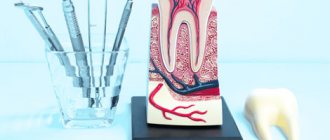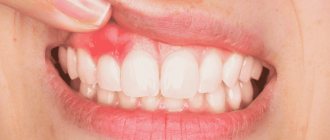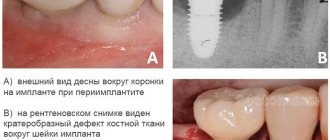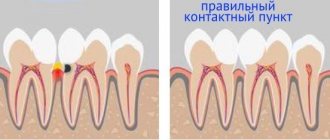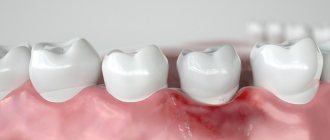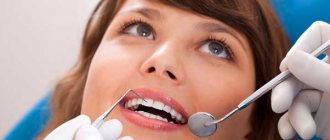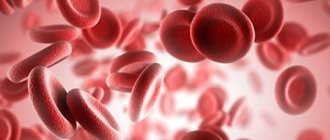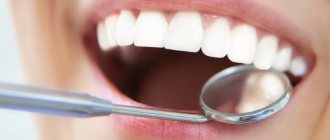Find out more
( 2 ratings, average: 5.00 out of 5)
Eating after 6 pm is a bad habit because the stomach does not have enough time before bed to digest food well. Eating before bed can lead to poor sleep quality, metabolic problems, a feeling of heaviness in the stomach, and other problems. Of all the rules that relate to weight loss, the secrets of not eating after 6 pm are the most common. Is there anything special about evening time? Why does eating before bed make you gain weight? This is true. Many foods simply do not have time to be digested; as a result, they become a burden in the gastrointestinal tract and do not provide any benefit. Moreover, during this period the body is already preparing for sleep, and all calories eaten during the “forbidden time” will go into fat tissue, and not into energy. Of course, you can overcome this habit on your own if you sort everything out.
Why can’t you eat or drink before surgery?
Sometimes you should not eat or drink before surgery or other medical procedures.
It depends on what kind of surgery you are having and what kind of anesthesia you will need. Before elective surgery or other medical procedures, your doctor or nurse will ask you not to eat or drink anything. If you are undergoing local anesthesia, you will most likely not need to fast from food. Local anesthesia numbs a small area of the body and can be used as an ointment, spray, gel or injection.
Is it possible to eat before gastroscopy?
The diet in anticipation of any endoscopy changes as it approaches the day of diagnosis.
The list of permitted and prohibited products is different on the first preparatory day and 1 day before endoscopy. You need to understand that endoscopy is done exclusively on an empty stomach, since eating even a small amount of food in the morning triggers an active and aggressive process of gastric juice production. This leads to changes in the appearance of the mucous membrane, which makes it difficult to obtain reliable information. 3 days before the study, you must give up alcoholic beverages, fatty, spicy and fried foods, smoked foods and pickles. That is, you need to avoid foods that promote gas formation and changes in stomach acidity. 2 days before endoscopy, you need to adhere to a more limited diet, excluding the consumption of fatty fish and meats, fast food (in any form), mushrooms, sauces, smoked meats, canned food, nuts and even seeds. The day before the examination, you must refrain from whole grains, beans, milk, cottage cheese (a small handful of exclusively low-fat cottage cheese is allowed), flour, pasta, tomatoes, fruits and dishes that promote prolonged digestion and fermentation. It is forbidden to have breakfast directly on the day of this medical procedure.
You will need to refrain from eating and drinking if you are going to:
- General anesthesia. This type of anesthesia turns off the patient's consciousness. You see nothing, hear nothing, feel no pain, your muscles completely relax, and after the operation there are no memories of it. Some types of general anesthesia are given intravenously, sometimes it is a gas that you are given to inhale.
- Regional anesthesia. This type of anesthesia numbs any part of the patient's body, for example, a leg, arm, or lower half of the body. Typically, the numbing agent is given through a catheter or injection.
- Sedation. These are sedatives, after which a person relaxes and can fall asleep. Sedatives are injected into a vein using an injection or catheter.
Eating food
The period of time during which you cannot eat after tooth extraction depends on the individual characteristics of the patient and the complexity of the operation performed. Most often, a couple of hours after removal, specialists allow you to eat something liquid. Dairy products, such as yogurt or kefir, are good for this. Thanks to such food, the body will quickly be satisfied, and the site of tooth extraction will not be damaged. During your first meal, you should not eat chips, crackers or deep-fried meat. Such hard food will greatly damage the cavity.
How many hours before surgery should you not eat or drink?
Different in different clinics. Just follow your doctor's and nurse's instructions. For example, they may ask you:
- Do not eat solid food after a certain hour the day before surgery. Do not drink milk or cream (even a spoon in tea or coffee counts). The milk curdles in the stomach and turns into small clots;
- drink only completely liquid drinks (water, juice without pulp, tea), but no later than two hours before surgery:
- stop eating or drinking anything two hours before surgery.
There may be other instructions, for example, if you have eaten a lot, you will have to abstain from food longer. You may be told not to chew gum or suck on candy after a certain hour.
There are special rules for babies and small children. Most clinics will allow you to breastfeed your baby four hours before surgery. Formula will have to be fed earlier because it stays in the stomach longer. Your doctor or nurse will give you detailed advice.
What products should you be careful with?
How soon can you eat after installing a reflective filling? There is no definite answer. But regarding the food consumed, experts agree. Thus, it is recommended to exclude coloring products for 2–3 days after a light filling. Ingestion of foods, including drinks, containing dyes may affect the color of the composite, since the filling is still highly permeable.
After restoring teeth with a light filling, it is better to avoid the following foods for at least two days:
- coffee;
- beet;
- carrot;
- blueberry;
- carbonated drinks;
- chocolate and cocoa.
In small quantities you can use:
- black tea;
- strawberry;
- cherries;
- natural juices.
Dentists pay special attention not only to when and what not to eat with a light filling, but also to the temperature of the food eaten. You should not eat too hot or cold foods, or eat them one after another or together. The temperature contrast can lead not only to damage to the filling, but also to damage to the tissues of a healthy and diseased tooth.
Soft food
If you answer the question of how long after tooth extraction you can start eating, then you can eat food either on the day of the operation or on the next day. However, it should be remembered that food must be soft at first. In order for the healing period to pass comfortably and quickly, experts recommend consuming soups, liquid cereals, purees, as well as foods enriched with vitamins in the first 2-3 days. The diet should include fruits, but preference should be given only to those with soft flesh. These are peaches, bananas, seedless berries, melon, apricots and persimmons. But it is better to refrain from citrus fruits such as oranges, lemons, kiwi, pomegranate and others. The large amount of acid contained in them has a negative effect on irritated gums.
Installing a temporary filling
Treatment of acute pulpitis, deep caries or other serious pathologies takes place in several stages. At this time, the carious cavity remains open. A temporary filling helps ensure its tightness and protect it from the penetration of bacterial microflora. Depending on the treatment regimen, a temporary filling can be installed for a period from two days to several months, while the medicine placed in the cavity or canal is effective.
To prevent the filling from falling out prematurely, patients are advised not to put pressure on the diseased tooth. Eating too hard food will destroy the filling material. An open channel will be susceptible to infection. To restore the integrity of the coating, the patient is advised to urgently visit the dentist. Installation and removal of temporary fillings must be performed by a specialist.
Is it necessary to follow a diet after caries treatment?
From the diet as a whole after caries treatment (especially if a large filling is installed and your own tooth has very thin walls), it is recommended to remove too hard foods - toffees, chewing gum, grilled fruit, nuts, etc. Or chew them with teeth located on the opposite side (if they do not have fillings).
Minimize the amount of consumed foods and drinks that contain coloring pigments (tea, coffee, beets) - under their influence, the filling material may slightly change its shade. This rule is especially relevant when restoring front teeth.
After difficult removal
Such removal is carried out when the dental roots are incorrectly located, on unerupted dental units or in the absence of the crown part of the tooth. Also, more complex surgical procedures may be required if the wisdom tooth is located too far away or a cyst has formed next to it. Late erupted wisdom teeth most often create many problems. Basically they grow incorrectly. The formation of a cyst is a bubble filled with cells and bacteria. And if the cyst is not removed on time, this can lead to the development of serious consequences. After such manipulations, sutures are placed at the removal site. The healing period of the gums after complex tooth extraction may vary in each specific case. If the specialist has not stated, then you should definitely clarify how long after the procedure you can start eating. It is also necessary to take into account the fact that when stitches are applied, they will have to be removed after some time. But with sutures, the socket is more reliably protected. However, even in this situation, you should refrain from eating hot, salty or spicy foods immediately after the removal procedure.
What does FGDS of the stomach show?
Gastroscopy allows you to obtain the most accurate information about the condition of organs and tissues, the presence of erosions and various formations. Using FGDS, the following problems can be identified:
- stomach and duodenal ulcers;
- benign and malignant neoplasms;
- gastrointestinal bleeding;
- gastroesophageal reflux disease;
- gastritis and duodenitis;
- esophagitis.
What symptoms may indicate that you should make an appointment with a gastroenterologist and, possibly, do an FGDS:
- vomiting and feeling of nausea;
- swallowing disorder;
- decreased appetite;
- bloating;
- chronic cough;
- pain in the epigastrium;
- feeling of heaviness in the stomach after eating;
- heartburn;
- belching;
- weight loss for no reason.
The first two hours after extraction
Removal of a tooth
After the doctor removes the tooth from the bone alveolus, the patient will undergo antiseptic treatment of the hole with bactericidal and antimicrobial drugs. A turunda soaked in a medicine with a hemostatic effect is placed in the hole, which is an open wound surface. These medications help stop bleeding caused by damaged blood vessels and prevent excessive blood loss.
The doctor puts medicine into the hole
The gauze turunda must be kept in the mouth for 15-30 minutes - the exact time depends on the medicine used. During this time, it is better to stay at the office of the doctor who performed the extraction. This is especially important for people with heart or respiratory conditions (such as asthmatics), as drugs used for local anesthesia, combined with post-operative bleeding, can cause serious side effects, such as increased heart rate, shortness of breath, dizziness . The most dangerous consequence is considered to be angioedema, a severe form of allergy that occurs primarily to medications used for local anesthesia.
Gauze swab in the hole
Within two hours after surgery you cannot:
- rinse your mouth;
- consume food and drinks;
- warm the sore spot;
- take medications from the analgesic group (so as not to cause an overdose of potent substances).
To reduce the intensity of pain, reduce swelling, stop bleeding and prevent inflammation, you can use cold compresses. To do this, you need to wrap several ice cubes in a piece of thick fabric, folded in several layers (you can use a terry towel), and apply it to the sore spot. You need to hold it for no more than 1.5-2 minutes, after which you need to take a break for 10-15 minutes. In total, you can repeat the procedure up to five times. If you do this more often, or keep the cold for several minutes in a row, you can chill the soft gum tissue at the site of tooth extraction and cause a purulent-inflammatory process.
- How soon can you eat after tooth extraction?
A cold compress will help temporarily relieve your suffering.
Important! Within 30 minutes after the tooth is removed from the bone alveolus, the hole is filled with blood, which coagulates and forms a blood clot that protects the wound from infection and food debris. Under no circumstances should you constantly touch the clot with your tongue, press on it and try to push it out of the hole. This can cause the formation of a “dry socket” and alveolitis, in which the patient will have to seek the help of a dentist again and re-injure the gums.
Alveolitis of the hole after tooth extraction
Proper nutrition before and after strength training
The second process associated with exercise and food is gaining muscle mass. Most athletes develop a special high-calorie menu with a lot of protein. The concept of calories is not the main concept here. Their quality is important here. The energy content of the product is measured along with the composition of each dish: the number of carbohydrates, fats and proteins per 100 grams.
Each substance has its own function:
- Sugars are the first source of energy, which is why there are so many kilojoules in sweets. Its excess makes people very energetic.
- Lipids are storage cells for storing energy-intensive substances. Fatty dishes are rich in these elements, so the body stores fat deposits from them.
- Proteins are building materials, without which muscle growth does not occur. It is found in meat, dairy products, and some legumes.
The balance of these substances leads to the simultaneous harmonious occurrence of all processes:
- there are enough carbohydrates in the blood for everyday activities, there is enough energy in the required amount;
- a small proportion of fat guarantees better breakdown of other microelements;
- muscle mass increases due to protein and physical activity.
So there are three types of food:
- low calorie;
- protein;
- balanced.
In everyday life, you need to stick to the last option, but there are cases when you should pay closer attention to the menu.
If the filling interferes after treatment
Even in the doctor’s office, after installing the filling, be sure to make sure that the restored tooth is not in the way (move your jaw back and forth, sideways, carefully close your teeth). The filling should not be felt or change the bite. Don’t be shy about talking to your doctor about any discomfort—sometimes the final stage of filling treatment can take even longer than removing cavities and applying filling material.
After treatment, anesthesia wears off within 1.5-2 hours. If a conductor type was used, then after 4-6 hours. Now you are beginning to fully feel the treated tooth, you can fully close your jaws and understand how comfortable you are after filling.
If you experience slight discomfort, it feels like the tooth is a little larger and your jaws aren't closing quite tightly—this is normal. The fact is that now you have been given a new filling in accordance with the bite, that is, with the shape and position of the tooth located on the opposite side. The treated tooth became taller than before - after all, there was caries and the old filling sagged. Therefore, if there is no sharp pain and obvious rejection, be patient for a few days. If the situation normalizes and you get used to it, then there is no reason to see a doctor. If discomfort persists for 1-2 weeks, you should visit your dentist to have the filling corrected.
How long does pain last after tooth extraction?
During the removal procedure, the tissue that surrounded the tooth is injured and the gums become inflamed. Due to the effect of anesthesia, the patient does not feel pain immediately after removal. But after a couple of hours, pain may occur. Over time, the pain becomes less and less. The duration of pain depends on numerous factors:
- The patient takes medications prescribed by the doctor to speed up healing.
- Complexity of the procedure.
- Strict compliance with all instructions and recommendations of a specialist.
After a complex removal, pain can spread not only to the gums, but also to the cheek, as well as to neighboring teeth. The healing process after such manipulation will take a little longer. Swelling after tooth extraction usually goes away within a couple of days. If, several days after the procedure, swelling and pain do not go away, then this may be a symptom of the development of complications. In such a situation, you must immediately seek the help of a specialist. In our 3D dental clinic "NovaDent" all surgical procedures are performed using high-quality modern anesthesia. The consultation is conducted by experienced, qualified dental surgeons who remove teeth as carefully as possible. We try to create comfortable living conditions for our patients, and do everything possible to minimize the risks of complications after removal. By making an appointment with our dentistry, you will receive a detailed consultation, be able to undergo highly accurate diagnostics, and also receive high-quality dental services using modern equipment using reliable materials. Sign up right now on our website using the registration form or call the administrators, who will be happy to find a convenient appointment time for you - we work seven days a week and weekends. Phone number to make an appointment with our specialists. Trust your health only to professionals!
Amalgam filling
Amalgam is an alloy of silver or copper with various metals, each of which performs its own function:
- Silver gives strength and antiseptic properties.
- Tin regulates the hardening process.
- Copper increases the strength of the alloy.
- Zinc prevents oxidation.
- Mercury is needed to obtain a plastic, quickly hardening mixture.
Amalgam fillings have both advantages and disadvantages. They are durable and affordable, but have low aesthetic properties (characteristic metallic luster, change in enamel color). These fillings are placed primarily on the back teeth (molars).
Metal fillings have a long hardening period, so dentists recommend that patients refrain from eating for 4-5 hours after the filling procedure. Do not consume foods that can cause metal oxidation. Since the dental alloy is insensitive to moisture, there are no restrictions on fluid intake.

